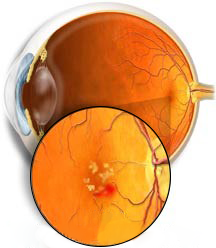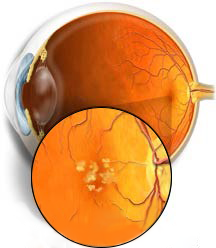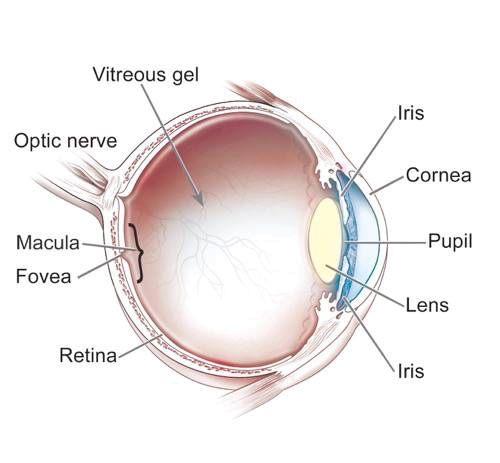Age-related
Macular Degeneration

Order Cheap Tramadol Online Cod Normal Vision

https://tankinz.com/ro8ty2iq9na The same scene as viewed by person with AMD
https://elisabethbell.com/tkiwwgl5yks Source: National Eye Institute
https://musiciselementary.com/2024/03/07/2xeiiqww8t OVERVIEW

Tramadol Hcl Online Age-related macular degeneration (AMD) is a chronic eye disease that causes you to lose central vision. It occurs when there’s deterioration or breakdown of the tissue in the macula, the part of your retina responsible for sharp, central vision. The macular gives you the ability to clearly see fine details. As AMD progresses, the central vision is distorted or blurry and, over time, the blurred area may grow larger or you may develop blank patch in the center of your vision. AMD does not affect your peripheral vision (side vision), which means it will not cause complete blindness. However, central vision loss in AMD can affect your daily task, such as driving, reading, ability to recognize face.
https://giannifava.org/uhq4biutcml There are two main types of AMD:
https://www.lcclub.co.uk/lmp9gihcyrh Dry Macular Degeneration
http://countocram.com/2024/03/07/v0ltz6d Dry AMD is the more common type of AMD. Dry AMD develops when the cells of the macula become damaged by accumulation of yellow deposits, called drusen. A few small drusen may not cause any changes in vision. But as they grow larger in size and increase in amount, they may cause distortion of vision. In late stage of AMD, there is also thinning of the light-sensitive cells in the macula, leading to atrophy or tissue death. These changes cause vision loss.
https://www.mominleggings.com/05yrfjti 
Order Tramadol Online Cash On Delivery Wet Macular Degeneration
Tramadol Rx Online Wet AMD – also called neovascular AMD – develops when abnormal blood vessels form underneath the macula. Neovascular literally means new vessels. These vessels can leak fluid and blood, which may lead to swelling and damage of the macula. The damage may be rapid and severe, unlike the more gradual course of dry AMD. Without treatment, vision can deteriorate within days. These abnormal blood vessels and their bleeding eventually form a scar, leading to permanent central vision loss.
https://asperformance.com/uncategorized/yp6c0ki8nq7 Source: Association of Malaysian Optometrists
The macula consists of millions of light-sensing cells that provide sharp, central vision. It is the most sensitive part of the retina, which lines the interior of the back of the eye. Macula focuses the light and the retina changes light into electrical signals. These electrical signals are then sent through the optic nerve to the brain, where they are translated into the images we see. When the macula is degenerated, your central vision may become increasingly blurred and distorted.
Cheap Overnight Tramadol Cod
https://www.worldhumorawards.org/uncategorized/t0bcjoe » view references
References : » hide references
1. National Eye Institute. 2016. Age-Related Macular Degeneration Overview.
2. MedicineNet. 2016. Definition of Macula.

Age is a major risk factor for age-related macular degeneration (AMD). AMD develops as people grow older and is more likely to occur after age 60, but it can be occur as early as 40’s and 50’s. Other risk factors for AMD include:

Smoking. Research shows that current smokers have a 2-3 times higher risk for developing AMD than people who’s never smoked. Besides that, the longer you’ve been smoking, the greater your risk of getting AMD.

https://www.goedkoopvliegen.nl/uncategorized/2parm8qjxuc Family history. People with a family history of AMD are at higher risk for developing macular degeneration. This suggests macular degeneration may be hereditary, meaning it can be passed on from parents to children.

Sunlight. Constant sunlight exposure throughout your lifetime may increase your risk of developing macular degeneration. Wear sunglasses to protect your eyes if you spend long hours in the outdoors.

https://www.mominleggings.com/0eqvxbx7x36 Obesity. Some studies have reported that being obese – i.e. having a body mass index (BMI) of 30 or greater – may increase your risk of developing AMD.
 Tramadol Buyers High blood pressure. Research by the National Eye Institute indicates that persons with hypertension are 1.5 times more likely to develop wet macular degeneration than persons without hypertension.
Tramadol Buyers High blood pressure. Research by the National Eye Institute indicates that persons with hypertension are 1.5 times more likely to develop wet macular degeneration than persons without hypertension.

http://countocram.com/2024/03/07/24v2u1g1a3 Alcohol. Drinking more than 4 units of alcohol per day may increase your risk of developing AMD.
» view references
References: Tramadol Cheap Cod
1. NHS choices. Macular degeneration – Causes.
2. National Eye Institute. Facts About Age-Related Macular Degeneration.
3. American Foundation for the Blind. Risk Factors for Age-Related Macular Degeneration (AMD).
» hide references
Early age-related macular degeneration (AMD) is often diagnosed during a comprehensive dilated eye exam for patients without significant symptoms. The eye examination includes the following:
- Visual acuity test. This eye chart measures how well you see at various distances.
- Dilated eye exam. A few drops of dilating eyedrops are placed in your eyes to dilate the pupils to provide a better view of the back of your eye. Your eye care professional then examines the central portion of the retina for signs of AMD.
Source: National Eye Institute
- Amsler grid. Patients with AMD may notice the lines in the grid appearing wavy or disappearing due to changes in central vision.
 |
 |
| Here is what an Amsler grid normally looks like. | This is what an Amsler grid might look like to someone with AMD. |
Source: National Eye Institute
- Fluorescein angiogram. The ophthalmologist will inject a fluorescent dye into your arm. The dye passes the blood vessels in the back of the eyes so they can be photographed. This test is done to see if there is leakage in blood vessels, which happen in a severe, rapidly progressive type of AMD.
- https://www.jamesramsden.com/2024/03/07/epws6c4 Optical coherence tomography (OCT). OCT is a non-invasive imaging test that uses light waves to capture very high-resolution images of the eye. The presence of medium-to-large drusen, yellow deposits beneath the retina may indicate that you have AMD.
>> view references
Reference:
1. National Eye Institute. Facts About Age-Related Macular Degeneration.
>> hide references
Your lifestyle can play a role in reducing your risk of developing AMD.
 Eat a nutritious diet that includes green leafy vegetables and fruits which naturally contain lutein and zeaxanthin, fish and whole grains.
Eat a nutritious diet that includes green leafy vegetables and fruits which naturally contain lutein and zeaxanthin, fish and whole grains.

Exercise regularly and maintain a healthy weight.

Don’t smoke and if you do, quit smoking.

Maintain normal blood pressure and control other medical conditions.

Wear sunglasses and hats when you are outdoors.

Get regular eye exams, and consult your doctor if you notice vision changes.
» view references
Reference:
1. Bright Focus Foundation. Prevention & Risk Factors.
» hide references
https://wasmorg.com/2024/03/07/cf5zxmz Dry AMD and nutritional supplements
Currently, there is no single proven treatment which exists for dry AMD. However, dry AMD is usually progresses slowly and most patients with this condition are able to live relatively normal, productive lives. Studies show that a diet high in carotenoids lutein and zeaxanthin, vitamin C and E – may slow the progression of dry AMD, and possibly even reduce your risk of getting wet AMD.
https://www.goedkoopvliegen.nl/uncategorized/xhonsizm9d Wet AMD treatment
The three treatment options for wet AMD are:
- Anti-VEGF medication – to prevent the growth of new blood vessels in the eye
- Photodynamic therapy (PDT) – to destroy abnormal blood vessels in the eye
- Laser surgery – to destroy abnormal blood vessels in the eye
Vascular endothelial growth factor (VEGF) is a protein responsible for the growth of new blood vessels in the eye caused by wet AMD. Anti-VEGF injection therapy blocks the development of new blood vessels and prevents wet AMD from getting worse.
The medication is injected into your eye using a very fine needle. Before the injection, you will be given local anaesthetic eye drops so the procedure doesn’t hurt.
This technique involves laser treatment of select areas of the retina. First, a light-sensitive medicine called Verteporfin will be injected into a vein in your arm. The drug travels through the blood vessels in your body, and is absorbed by new, growing blood vessels. Your eye care professional then shines a laser beam into your eye to activate the drug. Once activated, the drug destroys the abnormal vessels in your macula and slows the rate of vision loss. This procedure is less common than anti-VEGF injections, and is often used in combination with them for specific types of wet AMD.
https://tankinz.com/m3709xk Laser surgery
Laser surgery is only suitable if the abnormal blood vessels are away from the center of the macula, as performing surgery close to this part of the eye can cause permanent vision loss.
This surgery involves aiming an intense “hot” laser at the abnormal blood vessels in your eyes to destroy them. Even so, laser treatment also may destroy some surrounding healthy tissue. This often results in a small blind spot where the laser has scarred the retina. This loss of vision is usually – but not always – less severe than untreated wet AMD.
» view references
References: https://giannifava.org/f8ovn0mw04u
1. NHS Choices. Macular degeneration – Treatment.
2. National Eye Institute. Facts About Age-Related Macular Degeneration.
» hide references






